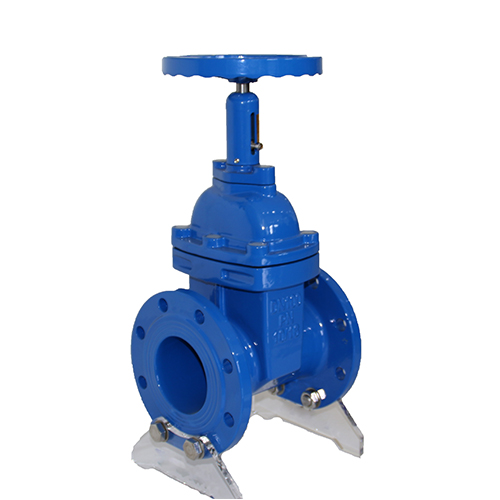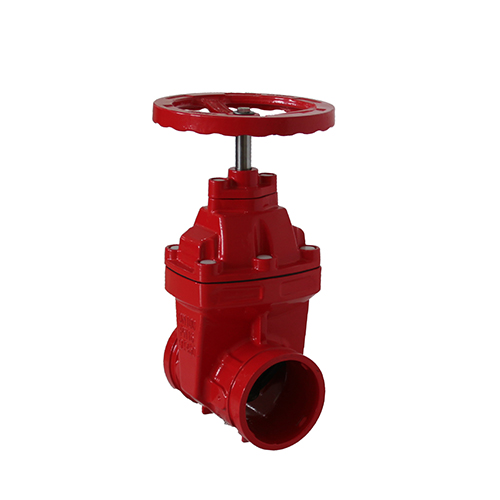The basic concept and working principle of the clamp butterfly valve
The clamp-on butterfly valve is a common type of valve that features a valve that is connected between two pipe flanges by means of a stud bolt. This design simplifies the installation process, reducing installation costs and space footprint. The butterfly valve works by rotating a disc-shaped butterfly plate to control the flow of media in the pipe. The butterfly plate is installed in the diameter direction of the pipeline, in the cylindrical channel of the butterfly valve body, the disc-shaped butterfly plate rotates around the axis, the rotation angle is between 0°-90°, and when the rotation reaches 90°, the valve is in a fully open state. The clamp-type butterfly valve has a simple structure, small size, light weight, only a few parts, and only needs to rotate 90° to quickly open and close, and the operation is simple.
Advantages and disadvantages of clamp-on butterfly valves
merit
- Simple structure, small size, light weight, easy and fast installation.
- Rapid opening and closing, small operating torque, labor-saving and lightweight.
- It has good fluid control characteristics, large flow coefficient and small pressure drop.
- It can achieve two-way sealing, and it is not limited by the flow direction of the medium during installation.
- Pneumatic and electric devices can be configured according to user requirements to meet the needs of remote control and program control.
shortcoming
- Compared with gate valves, the tightness of butterfly valves is relatively poor, although the sealing performance of butterfly valves of some manufacturers has been improved.
- Under high temperature and high pressure conditions, the sealing performance of butterfly valves may not be as good as that of gate valves.
- For fluids containing solid particles or viscous media, butterfly valves may be prone to wear or clogging.
Application scenarios of clamp butterfly valves
Clamp butterfly valves are widely used in petroleum, chemical, metallurgy, water conservancy and other industries for flow control and shut-off in pipeline systems. Especially in large piping systems, due to its small size and light weight, it is especially suitable for clamp-on butterfly valves. In addition, due to the flexibility of its construction, the clamp butterfly valve can also be used in applications where frequent opening and closing or remote control is required.
Clamp type butterfly valve VS flanged type butterfly valve
Advantages of the clamp butterfly valve
- Simple structure: The clamp-type butterfly valve is composed of valve body, valve stem, valve disc and sealing components, which is simple in structure and easy to install and maintain.
- Quick opening and closing: The clamp-type butterfly valve can realize fast opening and closing operation by rotating the valve disc, and the opening and closing time is short, which can effectively improve the work efficiency.
- Low fluid resistance: The valve disc design of the clamp-type butterfly valve is reasonable, the channel is smooth, and the resistance of the fluid through is small, which can effectively reduce energy consumption.
- Good sealing: The clamp-type butterfly valve is equipped with high-quality sealing components, which can provide good sealing performance and ensure that the fluid will not leak.
- Light weight: The valve body of the clamp butterfly valve is made of lightweight materials, which is light in weight and easy to handle and install.
- Long service life: The clamp-type butterfly valve is made of corrosion-resistant materials, which can operate stably for a long time in harsh working environments.
- Wide range of application: The clamp-type butterfly valve can be used to control the flow of gases, liquids and various corrosive media, and has a wide range of applications.
Disadvantages of the clamp butterfly valve
- The sealing performance is not as good as that of eccentric butterfly valve and flanged butterfly valve: the sealing effect of the clamp butterfly valve may not be as good as that of the eccentric butterfly valve and the flanged butterfly valve, especially when the slurry medium is conveyed, the sealing performance of the clamp butterfly valve may be reduced.
- Repair and maintenance may be slightly more troublesome than flanged butterfly valves: If there is a problem with one sealing surface, both sealing faces need to be disassembled, which may increase the difficulty and time of repair.
- It cannot be used at the end of the pipeline and downstream occasions that need to be disassembled: when the downstream flange is removed, the clamp-type valve will fall off, and additional short joints need to be made for disassembly.










